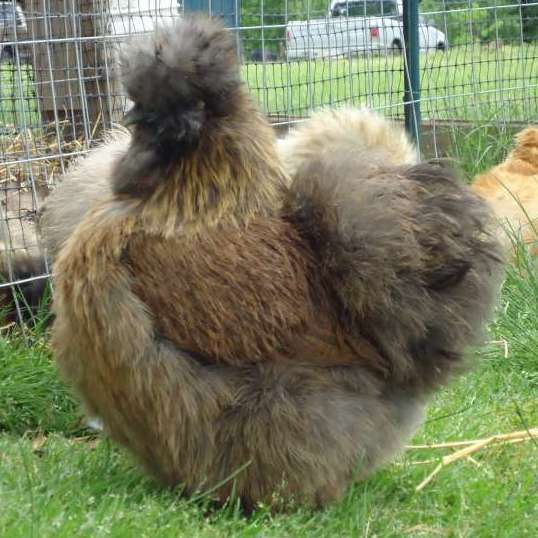Let me preface this question by saying that I know next to nothing about chicken breeds and am just enjoying the variety of birds we have found for a backyard flock

I am not concerned with breeding, since I cannot have a rooster. We have added various breeds and breed variations just to have an interesting group of calm semi quiet birds as pets, with a varietyof colors and sizes in an egg basket as an extra perk.
My kids have fallen for the Silkies, as have I. We bought a pullet at a farm swap who is a family favorite. She is friendly and comical to boot!
We have a few others which I either picked up in a bantam bin at the feed store or have been given. We know our funky chicken above, Bloom, is a pullet. She is our only laying pullet.
The others, we aren't so sure about. People have said they look girly, I want them to be girls.... But then I read things about the comb being big in pics that makes folks think roo.... Our Bloom is def not a roo, but her comb is huge! She has goofy long wattles too

. I can figure out that those prob aren't "show" qualities. We don't care at all. We enjoy her just as she is.
But how on earth do you know if they are male or female???

. Here are some of our sweeties. There are all 4-5 months old. They aren't pretty- misting them to keep them cool

I hope they all look girly here too

!!
I am not concerned with breeding, since I cannot have a rooster. We have added various breeds and breed variations just to have an interesting group of calm semi quiet birds as pets, with a varietyof colors and sizes in an egg basket as an extra perk.

. I can figure out that those prob aren't "show" qualities. We don't care at all. We enjoy her just as she is.
. Here are some of our sweeties. There are all 4-5 months old. They aren't pretty- misting them to keep them cool




!!







 its going to be really hard.
its going to be really hard. 












 if anything if you were to show, I'd label her partridge not blue partridge.
if anything if you were to show, I'd label her partridge not blue partridge.  [/COLOR]
[/COLOR] [/COLOR]
[/COLOR]

